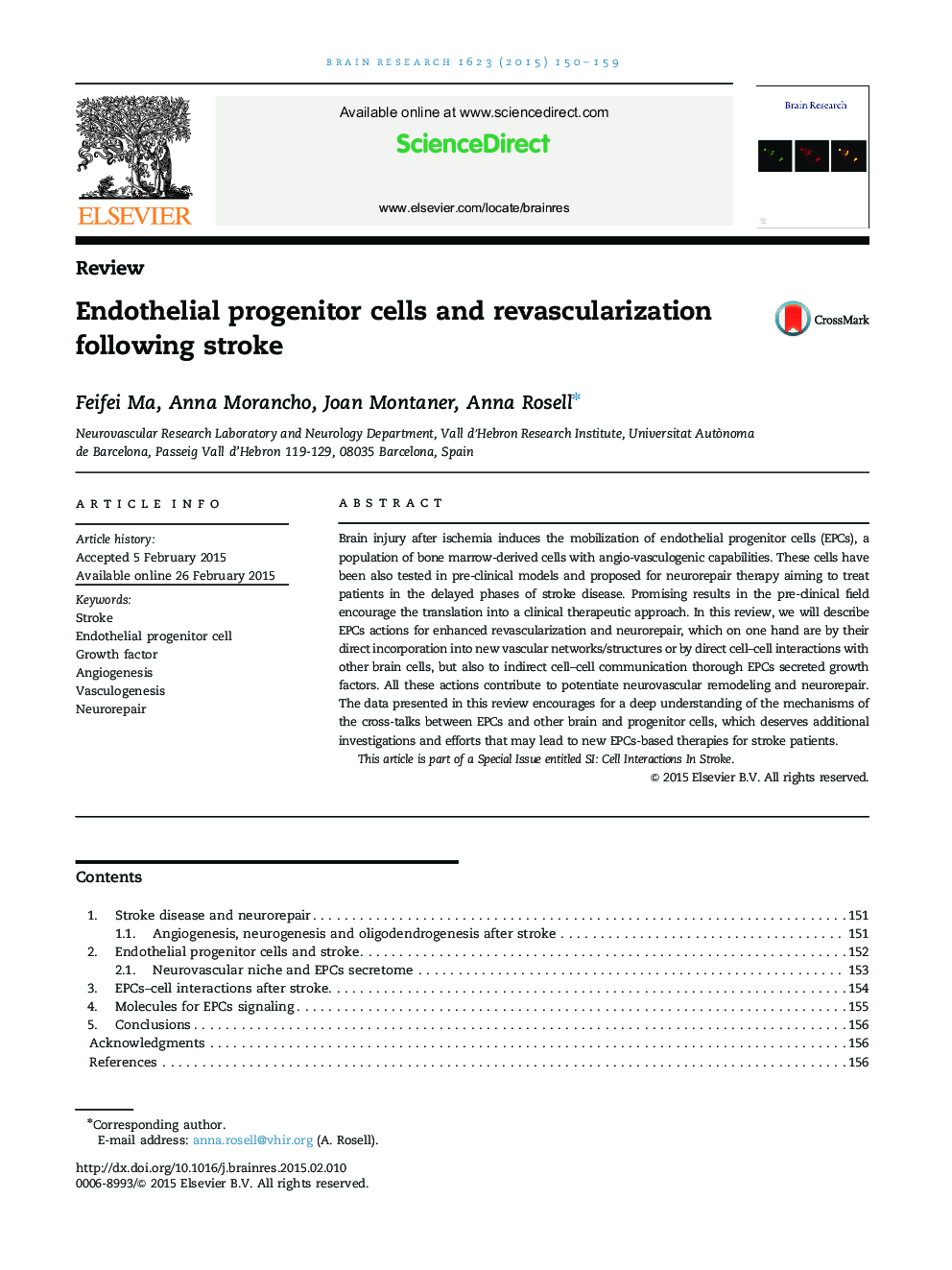| Article ID | Journal | Published Year | Pages | File Type |
|---|---|---|---|---|
| 4323741 | Brain Research | 2015 | 10 Pages |
•Stroke triggers a regenerative response early after the ischemic event.•EPCs participate and enhance post-stroke neurorepair.•EPCs can incorporate into a vascular network and secrete growth factors/cytokines.•Cell–cell communication between EPCs and brain tissue cells occurs after stroke.•EPCs secretome enhances mobilization and differentiation of other progenitors.
Brain injury after ischemia induces the mobilization of endothelial progenitor cells (EPCs), a population of bone marrow-derived cells with angio-vasculogenic capabilities. These cells have been also tested in pre-clinical models and proposed for neurorepair therapy aiming to treat patients in the delayed phases of stroke disease. Promising results in the pre-clinical field encourage the translation into a clinical therapeutic approach. In this review, we will describe EPCs actions for enhanced revascularization and neurorepair, which on one hand are by their direct incorporation into new vascular networks/structures or by direct cell–cell interactions with other brain cells, but also to indirect cell–cell communication thorough EPCs secreted growth factors. All these actions contribute to potentiate neurovascular remodeling and neurorepair. The data presented in this review encourages for a deep understanding of the mechanisms of the cross-talks between EPCs and other brain and progenitor cells, which deserves additional investigations and efforts that may lead to new EPCs-based therapies for stroke patients.This article is part of a Special Issue entitled SI: Cell Interactions In Stroke.
